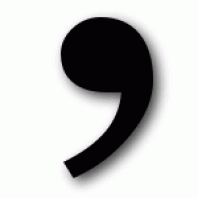CV Grammar and poor spelling on a CV is often said to have the potential of ruining the chances of the candidate progressing further than the application stage. Another issue is punctuation. Punctuation is a difficult, sometimes subjective subject, and a particular area of difficulty is the dreaded apostrophe. I have taken the following article in its entirety from the site mentioned. It’s effortless to understand and an easy reference for those of you that labour sometimes with where to put the apostrophe. For a professional cv follow these directions:
CV Grammar
The apostrophe:
(All of the following content from this article is taken from http://www.eng-lang.co.uk/apostrophe_rules.htm)
Rules for the correct use of the apostrophe.
The apostrophe is used:
To indicate the possessive.
To indicate missing letters.
Sometimes to indicate the structure of unusual words.
1. To indicate the possessive.
This is Peter’s book.
This book is Peter’s.
The dog’s dinner looks disgusting.
Diana was the people’s princess.
I tore up the men’s shirts.
One should choose one’s words carefully.
It is everyone’s duty to protest.
It is no-one’s responsibility.
Personal pronouns (words like I, you, he, she, it, we, they) indicate the possessive by becoming a whole new word. These new words are already possessive, so they don’t need an apostrophe: my, mine, your, yours, his, her, hers, its, our, ours, their, theirs. Note that none of them has an apostrophe.
The house is yours.
The dog broke its leg.
She said the book was hers.
They claimed it was theirs.
But really it was ours.
It’s means it is or it has. There’s no such word as its’.
2. To indicate missing letters in the middle of words or phrases.
You can’t have it.
Don’t do that!
I’d like an ice-cream, please.
We’d better hurry.
But we don’t always use apostrophes:
15, Elm Rd.
St Matthew Passion
Photo is short for photograph.
It is easier to say CD than Compact Disc.
In the cases where you wouldn’t use an apostrophe in the singular, don’t use it for the plural:
I had one photo.
They had two photos.
We sell CDs and DVDs.
I was born in the 1960s.
But we say this CD’s broken because it’s a short form of this CD is broken.
3. Sometimes to indicate the structure of unusual words.
A few words are sufficiently confusing that we want to indicate to the reader how the word is constructed. The apostrophe can be used for this if it is really necessary, but mostly it isn’t.
He bcc’d a copy to all the managers.
Mind your p’s and q’s.
Cross your i’s and dot your t’s.
A list of do’s and don’ts.
But you might consider:
He sent a blind copy to all the managers
Mind your ps and qs
Cross your is and dot your ts
A list of DOs and DON’Ts.
There’s no need for it in:
She got three As in her exams.
All our CDs are perfect.
We sell videos.
I’d like two cappuccinos, please.
Childrens’ shoes or children’s shoes?
The apostrophe goes directly after the thing doing the possessing:
The sun’s rays = the rays of the sun.
The table’s leg = the leg of the table.
The archbishop’s palace = the palace of the archbishop.
The archbishops’ palace = the palace of the archbishops.
The men’s shirts = the shirts of the men.
Children’s T-shirts = T-shirts of children.
The people’s princess = the princess of the people.
The American peoples’ inheritance = the inheritance of the American peoples.
My mother’s photo = photo of my mother.
One week’s notice = notice of one week.
Two weeks’ notice = notice of two weeks.
Three years’ experience = experience of three years.
Everyone’s help = help of everyone.
Note that we can often use for instead of of – shirts for the men. The possessive is much a looser concept than ownership: the girls may not own the school, but it’s still a girls’ school.
The apostrophe is used to show a connection between two things: if a dog has a bone, it’s the dog’s bone. But sometimes there is no possessive connection.
Sometimes the relationship is adjectival, not possessive:
Accounts department
Sports car
The accounts don’t have the department, and the sports don’t have a car – it’s a department of type “accounts”, and a car of type “sports”. We could just as well have written:
Marketing department
Two-door car
A department of type “marketing” and a car of type “two-door”. Clearly not possessive.
Sometimes there’s no thing to possess or be possessed:
Twelve weeks pregnant
There’s no such thing as a “pregnant”, and the twelve weeks can’t have one, so the phrase is not possessive. We could say twelve weeks’ notice and two years’ experience, because there are such things as notice and experience, and in some sense they are linked to (“given by” if you like) the twelve weeks and the two years. (Technically, pregnant is an adjective, notice and experience are nouns. Possessive phrases need two nouns – one to possess and one to be possessed.)
A forty-week pregnancy
The pregnancy is not linked to a “forty-week”. In forty weeks’ pregnancy, the pregnancy is linked to forty weeks.
She walks the dog
You sometimes see She walk’s the dog, but this is wrong. The walks here is not the possessive of a walk, but the present tense of the verb to walk. Verbs never take possessive apostrophes. It should be she walks the dog.
CD’s and video’s for sale.
This is also wrong – there’s nothing in the sentence to be possessed by the CD or the video. It should be plural, not possessive: CDs and videos for sale. It would be OK to say the CD’s label was coming off, and the video’s price was wrong, because the CD does have a label, and the video does have a price.
Sometimes it’s just a plural:
I own three Fords.
I reckon Sonys are the best DVD players.
I’ve sold three Ford Mondeos and two Ford Kas.
For lesson 1 on CV Grammar please click here

